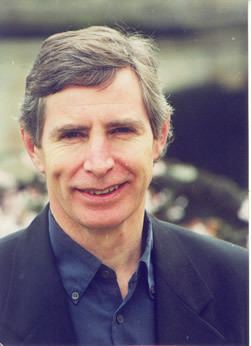Name Howard Griffiths | Role Scientist | |
 | ||
Fazil say istanbul symphony hr sinfonieorchester howard griffiths
Howard Griffiths is Professor of Plant Ecology in the Department of Plant Sciences at the University of Cambridge and a Fellow of Clare College, Cambridge. His scientific interests focus on plant physiological ecology, particularly in the application of molecular biology techniques and physiology to investigate the regulation of photosynthesis and plant water-use efficiency.
Contents
- Fazil say istanbul symphony hr sinfonieorchester howard griffiths
- Johannes brahms symphonies brandenburgisches staatsorchester frankfurt howard griffiths
- Research
- Publications
- References
Johannes brahms symphonies brandenburgisches staatsorchester frankfurt howard griffiths
Research
Griffiths specialisations include:
Griffiths has a particular interest in introducing the dynamics of plant processes without the need for time-lapse photography. His lectures demonstrate how the spatial segregation of photosystem 1 and photosystem 2 creates a highly dynamic system, with lateral mobility and migration of damaged photosynthetic reaction centres through thylakoid membranes. He studies the reaction mechanism of RuBisCO and how plants have evolved turbocharging "carbon concentrating mechanisms" to enhance the operating efficiency of photosynthesis. His work uses stable isotopes of carbon (carbon-13 and oxygen (Δ18O) to integrate carbon and hydrological cycles for individual plants, rainforest ecosystems and Antarctic moss deposits.
His research focuses on biochemical mechanisms such as C₄ carbon fixation which spatially separate one of the anaplerotic reactions of CO₂ fixation by Phosphoenolpyruvate carboxylase within mesophyll tissues and RuBisCO in an inner bundle sheath cell: CO₂ concentrations are elevated and offset the wasteful oxygenase activity and the salvage pathway, photorespiration, leading to improved radiation, water and nitrogen use by C₄ plants. As of 2017 his programmes are focusing on
- the energetics and leakiness of the C₄ pathway at low light and loss of canopy carbon gain;
- evolutionary origins and physiological function of the bundle sheath cell system, perhaps as a means of enhancing stem and leaf hyraulic conductance under drought and low temperatures.
He has longstanding interests in Crassulacean Acid Metabolism (CAM photosynthesis) and has worked in Trinidad and Panama on tropical epiphytes such as the bromeliad and orchid and cacti families, and now has interests in bioenergy production by Agave.
He has investigated carbon concentrating mechanisms (see photosynthesis) in algae and hornworts, focusing on the molecular determinants of the chloroplast pyrenoid in Chlamydomonas. He has a major collaboration funded by Biotechnology and Biological Sciences Research Council (BBSRC) and National Science Foundation (NSF) to explore the possibility of introducing elements of the algal carbon concentrating mechanism into vascular plants.
Publications
He is the author, co-author or editor of several textbooks and monographs including The carbon balance of forest biomes with Paul Gordon Jarvis.
According to Google Scholar and Scopus, his most highly cited peer reviewed publications have been published in the scientific journals The Journal of Experimental Botany, Oecologia, New Phytologist and Functional Plant Biology.
